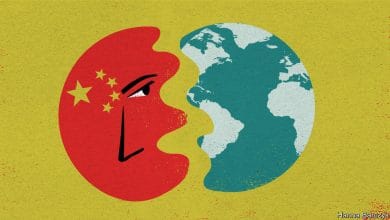
Venezuela’s currency
 As the government prints money, hyperinflation looms
As the government prints money, hyperinflation looms
THIS month Venezuela’s currency, the bolívar, passed a melancholy milestone: its value on the black market is now a hundredth of what it is supposed to be at the main official exchange rate. The government insists that there are 6.3 bolívares to the dollar, but it will cost you 630 to buy one from a willing seller. As the country’s stock of hard currency shrinks and the central bank prints money to plug a huge budget deficit, the bolívar’s collapse is accelerating (see chart below). It is worth a thousandth of what it was in 1999, when Hugo Chávez, Venezuela’s late autocrat, came to power.
The country may be on the verge of hyperinflation. Most economists reckon that the inflation rate is already 120% a year (the central bank stopped publishing price data, so no one is sure). Some expect it to reach 200% by the end of 2015.
The government uses a labyrinthine system of price and exchange controls to shield Venezuelans from soaring prices. But these make matters worse. Price ceilings have devastated local production; factories are operating at half-capacity and more than two-thirds of food is imported. Affordable goods are in short supply.
With a dollar’s-worth of bolívares, you can in theory buy 33kg (73 pounds) of maize flour, the national staple. But only if you can find a supermarket that has some and you are willing to queue for hours (repeatedly, since flour is rationed). For the same price, consumers could fill the tank of the family car 140 times with subsidised petrol. That amount of fuel is worth $5,000 across the border with Colombia. Guess what? Enterprising Venezuelans smuggle it across.
Venezuelans check prices on the Twitter account of DolarToday, a Miami-based outfit which publishes updates based on transactions in the Colombian border town of Cúcuta. This is where Colombians go to exchange pesos for bolívares, often to buy cheap fuel and other price-controlled goods in Venezuela for smuggling across the border. Transactions are few; the dollar rate is calculated indirectly, from the value of the Colombian peso. The result is erratic, but more realistic than the three official rates. Although it is illegal, many Venezuelan retailers mark prices based on deals struck in the Colombian backwater.
The government of Nicolás Maduro, Chávez’s hapless heir, calls the website a conspiracy to sabotage the economy and has tried repeatedly to block it. This month Elías Jaua, the influential “minister of communes”, said the government would ask the United States to arrest and extradite the “fugitive bankers” he thinks are behind it. Venezuela’s banking and stockbrokers’ associations condemned the “manipulation” of the exchange rate and called on Venezuelans to ignore all unofficial rates—and presumably also the law of gravity.
The “spiral of inflation and poverty” will not be resolved by asking Venezuelans to undertake “an act of faith”, wrote Angel Alayón, an economist and blogger. That will happen only when Mr Maduro reforms the economy by reducing the deficit, overhauling the state-owned oil company and eventually dismantling exchange controls. With parliamentary elections due in December, and the government trailing in the polls, he is likely to balk at the short-term pain such measures would cause. He is caught between a left-wing faction, which thinks that the economy needs still more controls, and a military-based mafia that profits from arbitrage under the current rigged system. Poor Venezuela.

